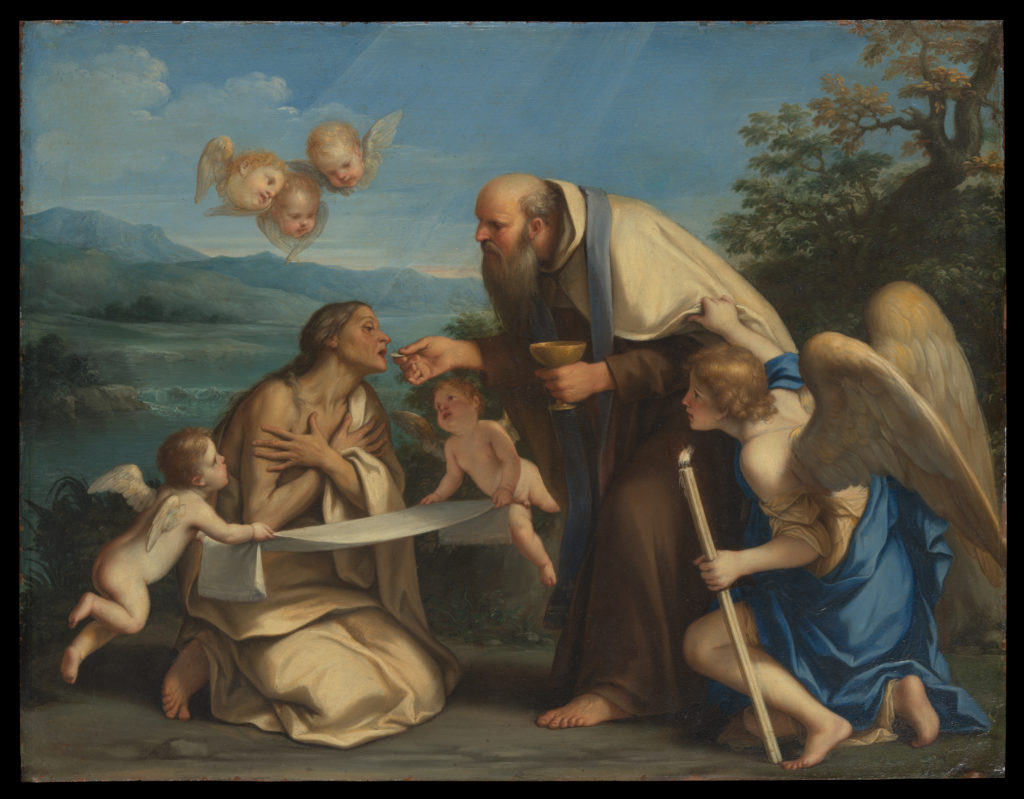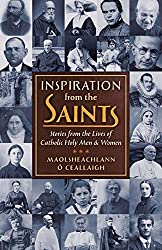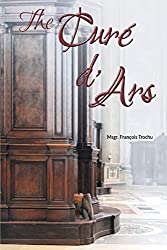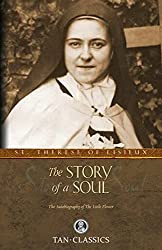
It is Lent. And in this penitential time, falls the Feast of a saint whose penances can only move one’s heart.
St. Mary of Egypt, also known as St. Mary of Cleophas, was born in the latter half of the fourth century. She was a penitent of unbelievable measure – sacrificing her sinful worldly life for one of total isolation, fasting and bodily mortifications.
Whilst extreme, her example is of great import for all of us, sinners as we are.
St. Mary of Egypt left her home at the early age of twelve.
She went to Alexandria, where she fell into prostitution. In recalling her sinful life, she humbly admitted that she experienced an insatiable lust, which led her to this life of sexual appetite. She therefore felt all the more sinful.
Once, she joined with a group of pilgrims, on their way to Jerusalem to pay homage to a relic of the True Cross.
Again, she admitted that she joined not only because she too wanted to adore the cross of the Saviour. But also to satisfy her lustful desires. For, a new group of wanderers may be wanting of her carnal wares.
This poor woman was able to satisfy her hunger and fill her purse, yet not to satisfy her wish to honour the True Cross.
For, on arriving at the church, wherein the relic resided, she was unable to enter. An invisible force prevented her from doing so.
Thrice did she attempt to enter this holy church and thrice was she prevented.
She then took herself away to some quiet place and fell to her knees in prayer.
She imagined the august Mother of God looking down upon her miserable self and began a deep process of contrition.
She beat her breast and shed a multitude of tears, petitioning her Blessed Mother to help her amend her ways.
She vowed from this moment forward to transform her life, begging her Mother never to leave her side.
Having spoken her petitions, she rose from the ground and found herself able to enter the church.
She cast herself before the relic of the True Cross of her Saviour, kissing the ground.
She then discovered a picture of the Blessed Virgin. Pleading once more for help and guidance, these words were spoken to her: ‘If thou goest beyond the Jordan, thou shalt find there rest and comfort.’
So off she went, to the place she would remain for forty-seven years, until her death.
On the way, St. Mary of Egypt found herself at the church of St. John the Baptist, on the shores of the river Jordan. There did she pray and receive, the Body and Blood of our Lord Jesus Christ.
Petitioning again her Blessed Mother, never to abandon her, she made her way across the river into the desert.
All she carried, were the clothes upon her body and three loaves.
She saw no-one until a year before her death.
Around 430AD, a holy monk, Zosimus, was making his Lenten retreat in the desert, with a secret desire to encounter a saintly person. Suddenly, he saw before him a naked figure, burnt from the sun. The figure swiftly ran from him. Zosimus took pace and caught up.
The figure called him by name, asking for his cloak to cover her female nakedness.
She then astonished him, with her tale and knowledge of scripture.
Deeply ashamed, she related her sinful history, as though it were a confession. She reported that he was the first soul she had encountered for forty-six years.
She had borne very great torments within her soul and through extreme acts of penance, had overcome them.
Her clothes had long disintegrated. Therefore, she had suffered the intense heat and cold of the desert.
The holy monk asked of what she had eaten over these many years.
The loaves had lasted her a long time, and she had found what little she could in the desert itself.
Zosimus was amazed by her strength of perseverance and touched by her holiness.
She bade him promise that he would return the following year on Maundy Thursday, bringing with him the Sacred Body and Blood of our Lord, that she may receive Holy Communion. He vowed he would.
So, the following year, on Maundy Thursday, Zosimus returned and saw before him a miracle.
St. Mary of Egypt was standing on the opposite side of the Jordan. She made the sign of the cross over the river and then walked across the water as though it were dry land.
At her request, Zosimus recited the Creed and the Lord’s Prayer and then administered Holy Communion to her.
On receiving, she uttered these words, ‘Now thou dost dismiss thy servant, O Lord, according to thy word, in peace; because my eyes have seen my Saviour.’
She begged the monk to return to the very same place the following year. Then, she departed across the river Jordan, just as she had come.
A year later, Zosimus again journeyed to the Jordan.
There, lying in the very same place, was the body of St. Mary of Egypt.
She had scrawled her name in the sand and the time of her death.
Mysteriously, a lion appeared and assisted the holy monk to bury the saintly woman. He then knelt and prayed to her for himself and Holy Church.
It was only after her death that Zosimus was then free to report to his fellow monks, the miraculous history of this holy woman. For she forbade him to do so during her life.
This history was recorded and has been handed down through tradition. And I present it here to you today, in order to honour this holy woman and her remarkable life of penance.
May her strength of will help each and every one of us through this penitential time.
St. Mary of Egypt, pray for us.
Foreword for Monarchy by Roger Buck
Buying Books at Amazon Through These Links Gives Us a Commission. This Supports Our Apostolate. Thank You if You Can Help Us Like This!








